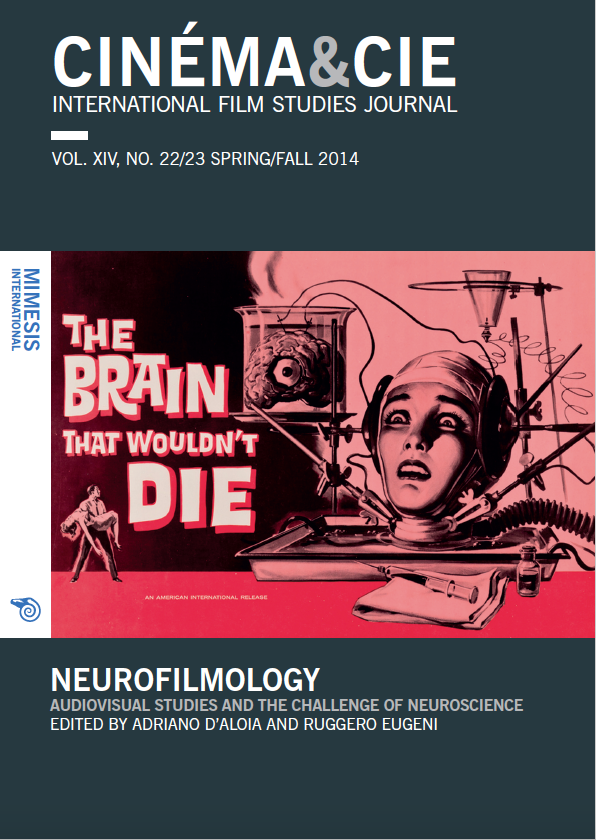Neurocinematics and the Discourse of Control: Towards a Critical Neurofilmology
Abstract
This article offers a close reading and a critique of Hasson et al.’s Neurocinematics, focusing on its treatment of the notion of control, meaning a predictable neural and cognitive activation triggered by film stimuli. In the first part of the article I suggest that the use of control in neurocinematics on the one hand relies on a similarly problematic – but still more nuanced – use of the notion in cognitive film theory, and on the other hand reflects a unidirectional model of communication which brackets out noisy cases that diverge from predictable behavior. In the second part, I argue that these “noisy” cases are exactly the ones that pertain the most to a complex and dynamic view of brain activity and film-mind communication. The dialogue between film studies and neuroscience can become more complex too, escaping from a problematic definition of film effectiveness with regards to predictable viewer reactions.






